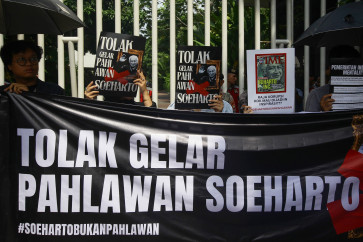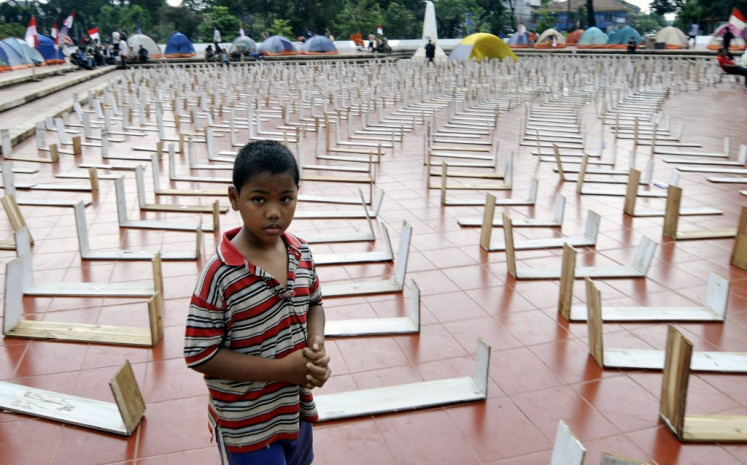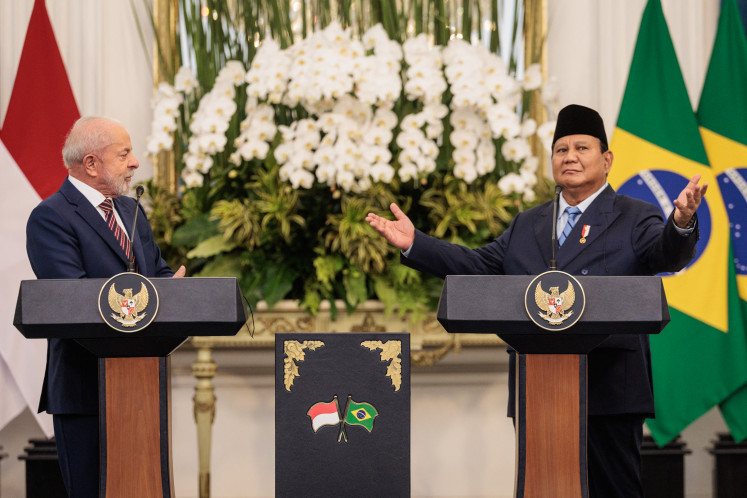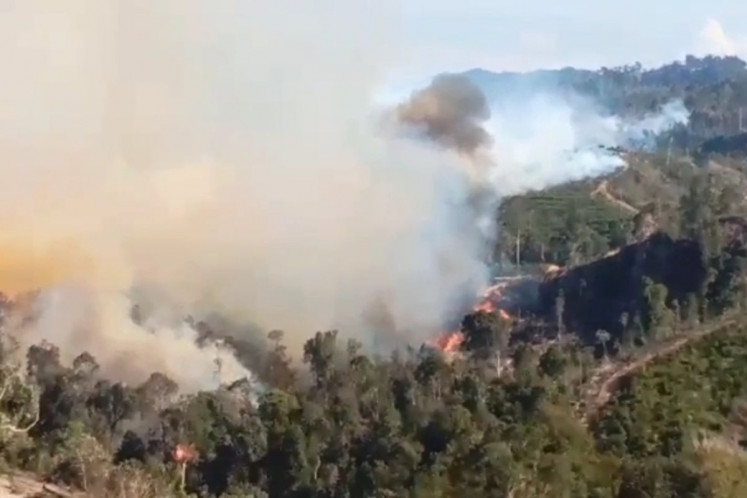Popular Reads
Top Results
Can't find what you're looking for?
View all search resultsPopular Reads
Top Results
Can't find what you're looking for?
View all search resultsIndonesia, Cambodia on course for new shape of relationship
As Cambodia and Indonesia mark the 60th anniversary of their diplomatic relations this year, the two countries will together explore new possibilities to unlock the potential for shared interests and to further deepen their friendship and cooperation
Change text size
Gift Premium Articles
to Anyone
A
s Cambodia and Indonesia mark the 60th anniversary of their diplomatic relations this year, the two countries will together explore new possibilities to unlock the potential for shared interests and to further deepen their friendship and cooperation.
With a population of 259 million people, Indonesia accounts for about 41 percent of Southeast Asia’s total population of 635 million. Its gross domestic product (GDP) stood at US$932 billion in 2016, or 39 percent of Southeast Asia’s GDP.
Indonesia occupies a strategic location that links the Indian Ocean with the Pacific Ocean. Since the resignation of president Soeharto in 1998 amid an economic crisis, democracy has taken root in Indonesia. Four general elections and three direct presidential elections have been conducted without violence since 1999, and the upcoming elections for the president and the national assembly in April are expected to proceed peacefully.
Indonesia is also a “country of youth”, with 28 percent of its population comprising people aged 14 or younger; the millennial generation, who came of age after the turn of the 21st century, plays an influential political and economic role. In addition, Indonesia has the world’s largest Muslim population.
The Indonesian economy grew 5.6 percent on average per year from 2010 through 2016, and the real GDP per capita expanded 45 percent from 2006 through 2015. As a result, Indonesia and other emerging economies have come to have people thinking that they are doing better and that the 21st century is their age.
The very foundation of the Cambodia-Indonesia relationship for the past 60 years is changing rapidly. So what shall we do?
“Indonesia 2045”, a long-term project envisioning an Indonesia 100 years since its independence, projects that Indonesia will join the high-income group of nations in the 2030s, leaving behind the middle-income group. By 2045, the plan says, Indonesia will grow into the world’s fifth-largest economy, only after the United States, China, India and Japan. Its population is expected to reach 320 million, and the area covering Jakarta and Bandung will constitute a huge metropolitan region, accommodating 25 percent of the population, or some 80 million people.
This plan also clarifies Indonesia’s challenges: The country must keep meeting its people’s expectations of continued economic growth, new jobs, increased income and an improved standard of living.
The key to realizing this goal is to prepare the infrastructure, train people and conduct research and development.
The importance of establishing the right infrastructure is well known. Not only railways, ports and power plants, but also intra-city transportation, water and electricity supply and other infrastructure for the Jakarta-Bandung metropolitan region and other regional core cities are big challenges.
Another emphasis is educating and training of people, as well as research and development. The government intends to drive up the ratio of youth attending college from 30 percent in 2015 to 60 percent from 2035 to 2045 and increase the percentage of people with higher education in the workforce from 38 percent to 90 percent during the same period.
As for research and development investment, Indonesia plans to increase its ratio to GDP from 0.08 percent in 2015 to between 1.5 and 2 percent in the period of 2035 through 2045.
The current economic trends in Cambodia are worth appreciating, as recorded in two decades of consistently high growth, the building of successful export-oriented industries, such as garment, manufacturing and agriculture, and more than tripling the GDP per capita over the past decade.
Cambodia’s government has created an open investment environment for foreign capital, which has essentially resulted in foreign direct investment. Cambodia’s economic growth is expected to remain at a sustained annual rate of 7 percent. A boom in construction, growth in domestic credit and declining global oil prices are largely offsetting the slowdown in key industries, specifically in agriculture, garment manufacturing and tourism.
With great stride, Cambodia graduated from the status of a least developed country to a lower middle income country in 2016. Cambodia’s strong economic growth in recent years has been markedly higher than the rate of population growth.
For 2017, Cambodia’s macroeconomic indicators remained healthy and robust, with the real GDP growing 7 percent, GDP per capita reaching $1,422, exports accounting for 46.2 percent of GDP and imports for 63 percent.
In the Kingdom of Cambodia, an unsaturated market with huge potential for future growth offers a strategic geographic location, preferential access to major international markets, favorable demographics, a competitive labor force, low tax rates and one of the most business-friendly governments within ASEAN.
The tourism sector was worth $3.6 billion in 2017 with 5.6 million visitors, and Cambodia estimates that it welcomed at least 6 million international tourists in 2018, and will see 7 million by 2020 and 10 million by 2025.
The tourism industry is Cambodia’s second-greatest source of hard currency after textiles. Given the country’s wealth of cultural heritage and sites of natural and ecological beauty, the return of political stability has encouraged huge growth in tourism over the past two decades.
The latest available tourism statistics valued the industry in Cambodia at $2.74 billion annually. In the “Kingdom of Wonder”, tourism provides approximately 400,000 jobs and, thus, represents the second largest source of formal employment in the country.
Several major resort development projects by international and Cambodian developers have been approved for the islands, southern coastline and mountain areas. The government is likewise looking to open up more of the country’s ecotourism, capitalizing on natural resources, like mountains, rivers, lakes, waterfalls and rare animal species.
In short, Cambodia is one of the most open economies in ASEAN with a business-friendly government and a strong reform record.
Sixty years is a long time in a relationship. Given the mutual convergence between Indonesia and Cambodia and the maturity of bilateral relations, it is time to look beyond the normal relationship and reshape it with a new direction. Both countries should think about establishing a special strategic partnership in the future.
___________________________
The writer is the Cambodian ambassador to Indonesia










